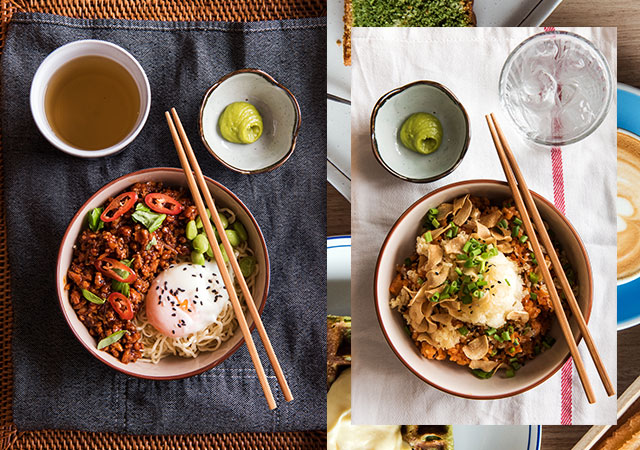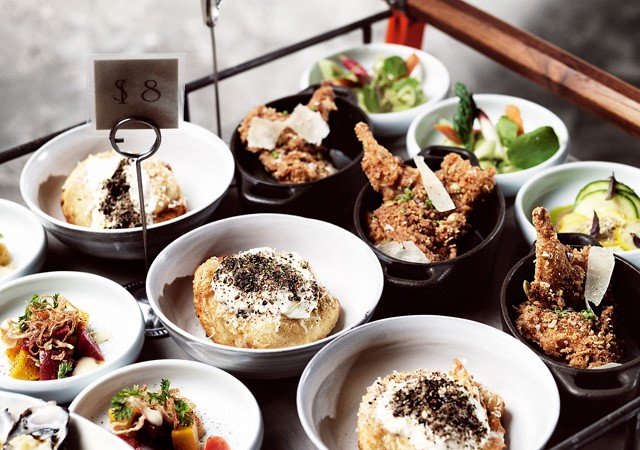Ramen’s becoming a global

Hayato Ishiyama fell under the charm of Ramen ราเมง as a high school student, and since then, this delicious and popular noodle soup has been firmly embedded in his life. In this article, he looks at the phenomenon of ramen: how noodle soup has become a favorite dish of the Japanese and why the number of fans of ramen in the world is steadily growing.
Noodles from my youth
When I was in high school in Aomori, in northern Japan, I often wandered around the city and tried the local ramen, which was made from strong broth of dried fish. At the time, ramen was the basis of my diet, and when I moved to Tokyo to study at university, I went even deeper into the culinary world of ramen. It happened in 1998. The main difference between the ramen from Aomori and its Tokyo version was the saturation of the soup.
Hayato Ishiyama (left) eats ramen at Ramen Dining Jingu in Tokyo, as part of his participation in the television programme
In the north, I tried only light ramen based on soy sauce, so the rich soup of thinnest (pork bones), which is the basis of hakata-ramen from Fukuoka or “home” (ikei) ramen from Yokohama shook me to the core. I’d get on my bike and go looking for rich soups.
As a student, I ate ramen every day for lunch. The university campuses I went to were in Shibuya and Yokohama, two of the toughest competitors in terms of ramen. My daily walks behind another cup of ramen inspired me so much that some of my classmates and I met specifically to exchange views on the ramen we were trying.

These meetings of Ramen fans eventually became an officially recognized university club called the Ramen Research Club (Ramen Kankyukai). This, in turn, attracted the attention of the media: not only did I get articles in magazines, but I also took part in the TV program “Telechampion: Chef of Ramen”, in which my knowledge of noodles was tested by other ramenologists.
(*Yokohama’s “home” ramen is a combination of fine noodle soup and thick straight noodles. The dish was authored by a chef who trained staff at Yoshimurai’s ramen restaurant in Yokohama)
Ramen learning is one bowl in one go
The first ramen guide, of which I was the editor-in-chief, was published in 2004 and was dedicated to ramen in Aomori. I’ve written various thematic articles for magazines before, but this is the first time I’ve ever seen a whole book.
I had to visit more than 100 ramen restaurants in search of material for the book in just two very busy months. However, it was thanks to the work on this book that I felt confident in the process of collecting and composing the material, and in the ten years since it was published, I have published more than 20 books about ramen.
I am now more and more involved in television, but the basic principle of my work hasn’t changed – I’m still walking the streets and trying out ramen. Over time, my culinary horizons have expanded to include other delicacies such as Yakiniku (Korean barbecue) and sushi, but I continue to eat at least one bowl of noodle soup per day for ramen’s purposes.
Ramen may not seem like the best hobby choice to some, but because of my love for this dish, I met a variety of people who shared my passion, including corporate executives, professional athletes, actresses, and celebrities. In the future, I would like to promote ramen using these connections and my personal experience. I think a more systematic approach to ramen, different from my rather chaotic method of research, will help the industry to develop further.
How did ramen become a Japanese dish
How come so many people love Japanese ramen?
Before I answer this question, I would like to consider some basic characteristics of ramen in general. In my “Ramen Guide”, the definition sounds like this: “A noodle dish that is a harmonious combination of soup, noodles and garnish.
The main ingredients of soup are pork bones, chicken and seafood (small dried sardines, dried bonito, kelp). Fragrant vegetables balance the flavor of meat and give the taste depth. The main seasonings (tare) are of three types: soy sauce, miso or salt.
However, recently such broths as thinner and thoripayitan (thick chicken broth) have gained popularity, in which the aroma of the main ingredients plays a leading role. When making noodles, wheat flour is mixed with alkaline water, which gives the noodles a unique smooth texture.
The original Chinese dish, known as lamyana, has changed over the years. The same thing happened to its Japanese name Sina Dog or Bale (both terms are translated as “Chinese Dog”). Over time, this dish became one of the main and most famous in Japanese cuisine. Let’s see how ramen has become so popular.
In 1910, a restaurant called Rairaiken opened in Tokyo’s Asakusa district, which was Japan’s busiest shopping mall at the time. The restaurant hired a chef from Chinatown, Yokohama, and included a dog, which is considered the first Japanese ramen, in the menu.
Asakusa was also the center of kabuki and cinemas at the time, so people who came to the show or movie show could enjoy the ramen at the same time. Ramen was still considered a foreign dish and was little known, but it is clear that the combination of its novelty and noodle habit, as it resembles a Japanese dog, made it easier for the new dish to become popular.
The Chinese, who lived in Japanese cities such as Sapporo in Hokkaido Prefecture, Kitakata in Fukushima Prefecture and Kurume in Fukuoka Prefecture, contributed to the spread of ramen in the early Showa period (1926-1989).
However, ramen continued to be relatively unknown and was considered a Chinese dish until the end of World War II, when it began to evolve to become the pure Japanese dish we know today.
After the war, ramen stalls began to emerge throughout Japan to meet the demand of soldiers,
returning home, and because wheat was much more accessible than rice in those years. Many of today’s famous ramen restaurants were founded in the first post-war decade (1945-1954). It was in this era that such varieties of ramen emerged as Kyushu-style thinnest (pork bones) and miso-flavoured ramen, which forms the basis of Sapporo-Ramen.
A lot of information online
When ramen based on soup and miso began to be cooked all over Japan, this dish was perceived as a separate culinary tradition, not as a kind of Japanese event. The advent of fast-food ramen and the proliferation of franchises in the second half of the 1960s and early 1970s led to Sapporo-Ramen and Hakata-Ramen, previously considered to be local cuisine, becoming key categories of ramen.
It is obvious that the next big step on the way to the top of the popularity of ramen was made with the advent of the Internet. Shortly after the advent of Windows 95 in 1995, a new type of communication network began to form. Whereas previously the information reached a user filtered by newspaper publications and television programs, now it is possible to get firsthand opinions, both on personal websites and through social networks.

